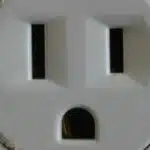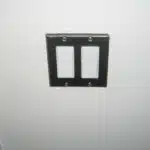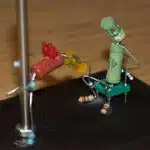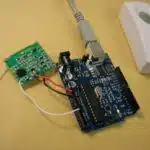As an electrical installation expert, I have encountered many homeowners who wish to upgrade their lighting system by installing electronic dimmer switches. This is a simple and cost-effective way of enhancing the ambiance of a room by controlling the brightness of the lights. However, many people are intimidated by the prospect of tackling such a project themselves. In this article, I will provide a step-by-step guide on how to install an electronic dimmer switch and highlight some important safety measures that need to be taken.
Before we dive into the installation process, it is important to understand what an electronic dimmer switch is and how it works. Unlike traditional switches that simply turn lights on or off, a dimmer switch allows you to regulate the amount of current flowing through your light bulbs, resulting in different levels of brightness. This is achieved through a process called pulse width modulation (PWM), which rapidly turns the power on and off at varying intervals depending on how bright or dim you want your lights to be. With this basic understanding in mind, let us proceed with our guide for installing an electronic dimmer switch – a task that can easily be accomplished with just a few tools and some careful attention to detail.
Understanding The Basics Of Electronic Dimmer Switches
Electronic dimmer switches are a popular choice for homeowners who want to have more control over the lighting in their homes. These switches allow for the adjustment of light levels, which can help create different moods and atmospheres in a room. There are several types of electronic dimmer switches available on the market, each with its own unique features and benefits.
One type of electronic dimmer switch is the leading-edge dimmer. This type of switch works by cutting off part of the AC wave cycle that powers the lights. Leading-edge dimmers are typically used with incandescent bulbs and some halogen bulbs. Another type is trailing-edge dimmers, which work by reducing the voltage supplied to the lights. Trailing-edge dimmers are often used with LED and CFL bulbs.
Using an electronic dimmer switch has many benefits beyond just adjusting light levels. Dimming your lights can also save energy and reduce your electricity bill, as well as extend the life of your light bulbs. Additionally, having these switches installed can provide greater convenience and flexibility in terms of lighting control throughout different areas of your home. Understanding these basics will help you make an informed decision when choosing which type of electronic dimmer switch to install in your home.
As you consider installing an electronic dimmer switch, it is important to assess your electrical system to ensure compatibility with this type of device. Assessing your electrical system involves checking both the wiring and load capacity to determine whether they can handle additional demands from the installation of a new switch. By understanding these requirements beforehand, you can ensure a safe and successful installation process for your electronic dimmer switch installation project.
Assessing Your Electrical System
- In order to install a dimmer switch, it is important to first identify the wiring in the circuit in order to ensure the dimmer switch is compatible.
- After verifying the wiring, it is important to test the voltage of the circuit to make sure it is within the recommended range for the dimmer switch.
- The circuit should next be tested to determine the amperage capacity of the circuit so that it can be determined if the dimmer switch can be safely installed.
- Once the wiring type, voltage and amperage capacity have been identified, the dimmer switch can be selected based on the compatibility of the electrical system.
- It is important to ensure the dimmer switch is rated for the same amperage or higher than the circuit to prevent overloading the electrical circuit.
- After the dimmer switch is installed, the voltage should be tested to make sure it is within the recommended range.
Identifying The Wiring
As an electrical installation expert, identifying the wiring is crucial when assessing your electrical system for the installation of an electronic dimmer switch. The first step in identifying the wiring is to locate the circuit breaker that controls the light fixture in question and turn it off. Then, remove the existing switch cover and take note of the wire colors attached to each terminal on the switch. These colors may vary, but commonly include black or red for hot wires, white for neutral wires, and green or bare copper for ground wires.
Once you have identified the wire colors, it is important to test voltage levels to ensure that they are safe to work with. Use a voltage tester to confirm that there is no power flowing through any of the wires by touching each wire with one probe while keeping the other probe grounded. If there is still power flowing through any of the wires, go back to your circuit breaker panel and turn off any additional circuits until all power has been cut off to the light fixture.
In conclusion, identifying wire colors and testing voltage levels are two essential steps in assessing your electrical system before installing an electronic dimmer switch. By taking these precautions, you can ensure that your installation process runs smoothly and safely without causing damage or harm to yourself or others. Remember to always prioritize safety when working with electricity.
Testing Voltage
Having identified the wire colors attached to each terminal on the switch, measuring current and checking continuity is essential to ensure that wires are safe to work with when assessing your electrical system for installing an electronic dimmer switch. Use a voltage tester to confirm that there is no power flowing through any of the wires by touching each wire with one probe while keeping the other probe grounded. If you get a reading, it means that there is still electricity flowing through the wires, and you need to go back to your circuit breaker panel and turn off any additional circuits until all power has been cut off.
When testing voltage levels, it’s important to follow safety precautions. Always wear safety gloves and goggles before handling electrical wiring. Ensure that your voltage tester is working correctly by testing it on a known live circuit or outlet before using it on the wires in question. When testing voltage levels, be sure not to touch any exposed metal parts of the tester or any of the terminals on the switch.
To conclude, testing voltage levels is a critical aspect of assessing your electrical system before installing an electronic dimmer switch. Measuring current and checking continuity ensures that you’re working with safe wiring and reduces risks of electrocution or fire hazards. Remember always prioritizing safety when working with electricity can prevent accidents or damage from occurring during installation processes.
Determining Amps Capacity
When it comes to assessing your electrical system for installing an electronic dimmer switch, determining the amp capacity of your wiring is another crucial aspect that needs to be considered. Calculating power requirements is essential to ensure that the wiring can safely handle the load required by your dimmer switch. Failure to determine amp capacity correctly can cause damage to your electrical system and even pose a safety hazard.
Choosing the right dimmer switch depends on calculating how much wattage will be needed for the light fixtures you plan to control. It’s important to determine if the existing wiring in your home can handle this wattage. To do this, you need to calculate the total wattage of all lighting fixtures that will be controlled by the dimmer switch and divide it by the voltage rating of your circuit. This will give you an estimate of how many amps are required, allowing you to choose a dimmer switch with an appropriate amp rating.
Once you have calculated the amp capacity required for your electronic dimmer switch, it’s crucial to ensure that your wiring can handle this load. Avoid overloading circuits as this can lead to overheating, which could cause electrical fires or other serious hazards. By choosing a dimmer switch with an appropriate amp rating and ensuring that your wiring is capable of handling this load, you’ll be able to install and use your electronic dimmer switch safely and efficiently.
Gathering The Necessary Tools
To successfully install an electronic dimmer switch, it’s important to have the right tools at your disposal. This is vital in ensuring that the installation process goes smoothly and without any hiccups. Choosing the right switch is also crucial as there are many different types of dimmer switches available on the market. Therefore, it’s essential to select a switch that’s compatible with your current lighting system.
Tips for beginners include researching and educating oneself about the installation process before proceeding with any electrical work. It’s important to read through the manufacturer’s instructions thoroughly and to follow them step by step. Additionally, it’s recommended to turn off power to the circuit before beginning any work, which will be discussed in more detail later in this guide.
To gather all necessary tools for installing an electronic dimmer switch, you will need:
- A voltage tester
- Wire strippers
- Pliers
By having these tools at your disposal, you’ll be able to successfully install a dimmer switch without encountering any issues relating to lack of preparation or incorrect tools. Remember, as a beginner, patience is key when installing an electronic dimmer switch. Take your time and ensure that every step is done correctly before moving on to the next one.
Turning Off Power To The Circuit
- Accurate location of the circuit breaker is the first step to turning off power to the circuit.
- Before beginning any work on the circuit, it is essential to shut down the power to the area to be worked on.
- After the power is shut down, the circuit can be tested to ensure the power is off.
- All wires should be checked for voltage before moving on to the installation of the dimmer switch.
- It is important to always use the proper tools when disconnecting and reconnecting electrical wiring.
- After the dimmer switch is securely installed, the power should be turned back on and tested for functionality.
Locating The Breaker
Before installing an electronic dimmer switch, it is crucial to turn off power to the circuit. This is a necessary precaution to avoid electric shock or damage to the switch and other electrical components. To do this, you need to locate the breaker that controls the circuit on which you will be working.
Firstly, before turning off any power source, it is essential to check compatibility with your electronic dimmer switch. Some switches require specific voltage or amperage ratings and may not work with your current electrical system. Therefore, it is imperative to read the manufacturer’s instructions carefully and ensure that your electrical system meets the requirements of your chosen switch.
Secondly, identifying the electrical panel containing your circuit breaker can be a daunting task for some homeowners. However, it is essential to locate this panel before proceeding with any electrical work in your home. Typically, electrical panels are found in basements or garages and are marked with a label indicating what each breaker controls. You should look for the label that corresponds to the room where you plan to install your switch.
Finally, before doing anything else, you must turn off power at the breaker by switching it off manually. This step should never be skipped as failure to do so could lead to serious injury or even death. Once you have turned off power at the breaker, use a voltage tester pen or multimeter to confirm that there is no electricity flowing through the wires before beginning installation of your new dimmer switch.
In conclusion, turning off power at the circuit breaker is an essential safety measure when installing an electronic dimmer switch in your home. By checking compatibility and identifying your electrical panel beforehand and always using proper safety precautions when working with electricity, you can successfully install a dimmer switch without incident while ensuring that all wiring remains safe and functional for years to come.
Shutting Down The Power
Ensuring the safety of the electrical system is crucial when installing an electronic dimmer switch. One critical aspect of this is shutting down power correctly to the circuit where you will be working. It is essential to understand that even low voltage electrical systems can cause serious injury or death if not handled properly. As such, taking precautions to avoid accidents should always be a top priority.
Shutting down the power at the circuit breaker is an important step in ensuring that you are safe when installing a dimmer switch. However, it’s not enough to just flip off the breaker and assume there’s no electricity flowing through the wires. Common mistakes to avoid include failing to check whether other circuits are also connected to the same panel or improperly labeling breakers, causing confusion during installation. Therefore, it’s vital to take extra care when shutting down power at the circuit breaker.
To ensure that all wiring remains safe and functional for years, it’s important first to confirm that there is no electricity flowing through the wires before proceeding with installation. This can be done by using a voltage tester pen or multimeter, which verifies that there’s no current present in live wires before beginning work on your new dimmer switch. Taking these steps ensures that you’re not only protecting yourself but also preventing damage to your electrical system and avoiding costly repairs in the future.
Testing The Circuit
Turning off power to the circuit is a critical step in ensuring a safe and successful installation of an electronic dimmer switch. However, it is not enough to simply shut down the power at the circuit breaker without taking additional precautions. One important step in this process is testing the circuit to ensure that there is no live voltage present before proceeding with installation.
Measuring voltage using a voltage tester pen or multimeter is an essential part of testing the circuit before installing a dimmer switch. This allows you to verify that there is no current flowing through any wires, which could otherwise cause serious injury or damage to your electrical system. Additionally, it’s important to check whether the new dimmer switch is compatible with your existing wiring and circuit breaker system.
It’s crucial to take every necessary step when installing an electronic dimmer switch, including checking for live voltage and compatibility issues. By doing so, you can ensure not only your own safety but also that of your household’s electrical systems and appliances. As an experienced electrical installation expert, I urge homeowners to always prioritize safety when working with electricity and seek professional assistance if they are uncertain about any aspect of their installation process.
Removing The Existing Switch
After successfully turning off power to the circuit, the next step in installing an electronic dimmer switch is removing the existing switch. This process involves removing screws to detach the switch from the wall and disconnecting wires that are attached to it.
To remove the switch from the wall, first take a screwdriver and unscrew any visible screws holding it in place. Next, gently pull the switch away from the wall until all of its edges are free from any mounting brackets or clips. Be sure to keep track of these screws as they will be needed when installing the new electronic dimmer switch.
Once you have removed the screws and detached any mounting brackets or clips, you can begin to disconnect wires that are connected to your existing switch. Note which wire is connected to each terminal and use your pliers if necessary to carefully disconnect each wire one at a time. It is important not to mix up these wires as they will need to be properly reconnected when installing your new electronic dimmer switch. With the old switch disconnected, you are now ready for preparing the wires for the new switch.
Preparing The Wires For The New Switch
Checking Compatibility
Before you start preparing the wires for the new switch, you need to check if the new dimmer switch is compatible with your existing wiring and light fixtures. Most modern dimmer switches are designed to work with incandescent, halogen, and LED lights. However, not all dimmer switches are compatible with fluorescent or CFL bulbs. To avoid any compatibility issues, it’s essential to read the manufacturer’s instructions carefully and choose a switch that’s compatible with your lighting system.
Identifying Wires
Once you’ve chosen a compatible dimmer switch, you can proceed with identifying the wires and preparing them for installation. The first step is to turn off the power supply at the circuit breaker or fuse box. Then remove the old switch cover plate and switch from the electrical box. You will see three wires- black (hot), white (neutral), and green or bare (ground). In some cases, there may be two hot wires- one black and one red- which are connected to a single-pole switch.
To identify which wire is which, use a voltage tester or multimeter to test each wire’s current flow. The black wire should show 120 volts when tested against the white wire or ground wire. The white wire should show zero volts when tested against the black or ground wire. The green or bare wire is grounded and doesn’t carry current.
Transition into Next Section
Now that you’ve identified your wires and ensured compatibility, it’s time to connect your new dimmer switch safely. But before we move on to connecting your new switch, let’s take a moment to discuss some important safety precautions you should keep in mind during this process.
Connecting The Dimmer Switch
Connecting a dimmer switch is akin to fitting a puzzle piece together. You must ensure that all the wires are correctly connected before powering on the device. To achieve this, you need to use wiring techniques that will enable you to connect the wires securely in place. The key is to follow the instructions provided by your manufacturer and ensure that you have all the necessary tools at hand.
Before connecting your dimmer switch, it is essential to troubleshoot any issues with your wiring system. This involves checking for any loose connections or faulty wires that may cause electrical malfunctions. One of the troubleshooting tips is to use a voltage tester to determine whether there is any power flowing through your circuitry. If you detect any issues, it’s best to consult an expert electrician who can help identify and fix any problems.
The following numeric list highlights some crucial factors you should consider when connecting your dimmer switch:
- Always turn off power at the breaker box before starting installation.
- Use wire connectors or wire nuts to secure wires together.
- Double-check wire connections before turning on power.
By following these steps, you can safely and easily connect your dimmer switch without worrying about electrical hazards. Once everything is in place, you can move on to securing the switch in place and testing its functionality.
Securing The Switch In Place
After successfully connecting the wires, the next step is to secure the switch in place. This is an important step since it ensures that the switch remains stable and safe to use. One of the best tips for stability is to ensure that the switch fits snugly into its box. If there are any gaps or looseness between the box and the switch, it can lead to instability and may pose a safety risk.
Another tip for securing the switch in place is to use screws that are long enough to anchor the switch firmly. Common mistakes include using screws that are too short or not tightening them enough, which can result in a wobbly switch. It’s also crucial to ensure that there are no loose wires inside the box as they can cause a short circuit.
Properly securing your electronic dimmer switch requires attention to detail and precision. Taking these tips into consideration will help ensure that your installation is stable and safe for use. In our next section, we’ll discuss how to reattach the switch plate after securing your new electronic dimmer switch in place.
Reattaching The Switch Plate
To remove the old switch plate, unscrew the screws holding the plate to the wall, then pull the plate away from the wall.
To attach the new switch plate, line up the screw holes of the plate with the mounting holes of the wall, then firmly secure the plate with screws.
When attaching the new switch plate, it is important to ensure that the plate is leveled, as an unleveled plate could cause the switch to malfunction.
Furthermore, when attaching the new switch plate, the wires connected to the switch should be securely insulated to prevent any hazardous situations.
Removing The Old Switch Plate
To begin installing a new electronic dimmer switch, the first step is to remove the old switch plate. This requires disconnecting the wires and removing the screws that hold the plate in place. Before starting this process, it is important to ensure that the power is turned off at the circuit breaker to avoid any electrical shocks or accidents.
To remove the old switch plate, use a screwdriver to loosen and remove the screws that hold it in place. Carefully pull the plate away from the wall to expose the wires behind it. Use a voltage tester to confirm that there is no electricity running through these wires before proceeding with any further steps.
After confirming that there is no electricity running through the wires, disconnect them from their terminals by loosening and removing them using pliers or wire strippers. Be sure to label each wire with tape or a marker so you can easily identify which wire goes where when reattaching them later on. With all of this completed, you are now ready for the next step of installing your new electronic dimmer switch.
Attaching The New Switch Plate
Now that the old switch plate has been removed and the wires have been disconnected, it’s time to move on to the next step of installing a new electronic dimmer switch: attaching the new switch plate. Before jumping into this step, it’s important to note that there are many different types of switch plates available on the market. When choosing a switch plate, make sure it is compatible with your new electronic dimmer switch and fits properly over your electrical box.
Once you have chosen a suitable switch plate, it’s time to customize its design if desired. Many switch plates come in a variety of colors and styles, so you can choose one that matches your decor or personal preferences. Some manufacturers also offer custom design options, allowing you to add images or text to your switch plate for a truly unique look.
With your chosen or customized switch plate ready to go, carefully attach it over the electrical box using screws that are provided with the dimmer switch. Be sure not to overtighten these screws as they can damage both your new electronic dimmer switch and the electrical box itself. Once attached securely, turn the power back on at the circuit breaker and test out your new electronic dimmer switch by adjusting its settings accordingly. Congratulations! You have successfully installed a new electronic dimmer switch with a personalized touch.
Turning The Power Back On
Before turning the power back on, there are several tips for safety that homeowners should keep in mind. First, double-check that all wiring connections are tight and secure before restoring power. Loose wires can result in electrical hazards and should be avoided at all costs. Secondly, ensure that all electrical equipment and tools are properly grounded to prevent electric shock.
Common mistakes to avoid when turning power back on include failing to follow manufacturer instructions and bypassing safety features. It is essential to carefully read the user manual provided by the manufacturer before installing or using any new electronic component, including a dimmer switch. Additionally, do not attempt to disable any safety features built into the switch as they serve an important role in preventing electrical accidents.
Once you have taken these precautions, it is time to turn the power back on and test your new dimmer switch. However, before proceeding with this step, make sure that you have followed all of the previous steps correctly and thoroughly. With proper installation procedures followed and all necessary precautions taken, testing your new dimmer switch should be a breeze.
Testing The New Dimmer Switch
To ensure the proper installation of your new electronic dimmer switch, it is important to test its accuracy. This can be done by measuring the voltage output using a multimeter. Begin by turning off the power to the switch at the circuit breaker. Then, remove the cover plate and unscrew the switch from its mounting bracket.
Next, use a screwdriver to loosen the screws on each wire and detach them from the old switch. Connect these wires to their corresponding connections on the electronic dimmer switch and securely fasten them with screws. Once all wires are connected, replace the cover plate and turn on power at the circuit breaker.
Finally, test the accuracy of your new electronic dimmer switch by adjusting its settings and measuring voltage output with a multimeter. Ensure that voltage readings match manufacturer specifications for your specific model. If any discrepancies are found, refer to troubleshooting common issues section for guidance on how to resolve any issues before fully utilizing your new electronic dimmer switch.
Troubleshooting Common Issues
- When troubleshooting an electronic dimmer switch, it is important to check that the switch has power.
- Poor dimming performance may indicate that the dimmer switch has not been wired correctly.
- Incorrect wiring of the electronic dimmer switch is a common issue, and must be checked in order to identify the cause of any issues.
- If the circuit breaker for the switch is tripped, the switch will not have power, and must be reset before further troubleshooting.
- The manufacturer’s instructions should be consulted to ensure the electronic dimmer switch is wired correctly.
- If the instructions are followed correctly, this will reduce the chances of poor dimming performance.
No Power To Switch
One common issue encountered during the installation of electronic dimmer switches is the absence of power to the switch. If you are experiencing this problem, it is important to troubleshoot the issue before proceeding with the installation. There are several troubleshooting solutions that you can try to identify why there is no power to your switch.
First, check if there is a tripped circuit breaker or a blown fuse in your electrical panel. This could be due to an overload caused by other electrical appliances in your home, or a short circuit in the wiring. If you find that this is the case, turn off all appliances and reset the breaker or replace the fuse. Always be mindful of safety tips when working with electricity and ensure that your hands are dry and you are wearing protective gear.
Another possible cause for no power could be loose wiring connections within the switch box. Turn off power at the breaker box before examining any wires to avoid electrocution. Tighten any loose connections and ensure that all wires are properly connected according to manufacturer instructions. If none of these solutions work, it may be necessary to consult with a professional electrician for further assistance.
By following these troubleshooting tips and taking appropriate safety measures, you can easily identify and solve issues of no power to your electronic dimmer switch. It’s always best to take your time and double-check everything before turning on electricity again. Remember, even small mistakes can lead to serious consequences if not handled properly!
Poor Dimming Performance
After successfully troubleshooting the issue of no power to your electronic dimmer switch, another common problem that may arise is poor dimming performance. This can be frustrating, especially if you have invested in a high-quality switch and light fixtures. Fortunately, there are several tips for troubleshooting and improving dimming performance.
One possible cause of poor dimming performance is incompatible bulbs. Not all LED or CFL bulbs are designed to work with electronic dimmers, so it’s important to check the manufacturer’s specifications before purchasing. Additionally, using different types of bulbs in the same circuit can lead to inconsistent dimming levels. To solve this issue, consider replacing all bulbs in the circuit with compatible ones from the same manufacturer.
Another solution to improve dimming performance is adjusting the minimum load requirements of your switch. Electronic dimmer switches typically have a minimum load requirement that must be met for proper operation. If you are using low-wattage bulbs or have a small number of fixtures connected to your switch, this minimum requirement may not be met, resulting in poor performance. Check the manufacturer’s instructions on how to adjust this setting to match your specific needs.
In conclusion, while electronic dimmer switches can enhance your home’s ambiance and energy efficiency, they do come with their own set of challenges. By following these tips for troubleshooting and improving dimming performance, you can ensure that your switch works effectively and provides optimal lighting control for years to come. Remember to always prioritize safety when working with electricity and consult with a professional electrician if necessary.
Incorrect Wiring
When it comes to electronic dimmer switches, incorrect wiring is another common issue that homeowners may encounter. This can result in a variety of problems, such as flickering lights or even electrical hazards. Common mistakes include connecting wires to the wrong terminals or failing to properly ground the switch.
To troubleshoot this issue, it’s important to first turn off power to the switch at the circuit breaker and verify that all connections are secure and properly grounded. Check the manufacturer’s instructions for proper wiring diagrams and make sure that you have followed them correctly. If you are unsure about your wiring skills, it’s always best to consult with a professional electrician.
Preventing incorrect wiring starts with taking the time to carefully read and understand the manufacturer’s instructions before beginning installation. Additionally, labeling wires can help prevent confusion and ensure that they are connected correctly. By following these troubleshooting tips and taking preventative measures, homeowners can avoid issues related to incorrect wiring and enjoy optimal performance from their electronic dimmer switches for years to come.
Safety Precautions To Keep In Mind
Now that we have discussed some common issues that arise with electronic dimmer switches, it is important to keep safety precautions in mind when installing them. Safety gear should be worn throughout the installation process to prevent any accidents from occurring. This includes wearing gloves, safety glasses, and any other equipment necessary for the specific installation.
Before beginning the installation process walkthrough, it is important to turn off the power source at the circuit breaker. This will ensure that no electrical current is running through the wires during the installation process. It is also important to read the instructions carefully before attempting to install the switch. Each switch may have different requirements and instructions for proper installation.
Once you are confident in your ability to install the electronic dimmer switch safely, you can begin the process following the manufacturer’s instructions step-by-step. However, if at any point you feel unsure or uncomfortable with the installation process, it is always better to call a professional electrician who has experience with this type of installation. Knowing when to call a professional can save time and prevent potential hazards from occurring during or after the installation process.
Knowing When To Call A Professional
When to call a professional is a crucial consideration when you’re dealing with electrical installations. While replacing a standard light switch with an electronic dimmer switch may seem like an easy task, there are some safety measures that should not be taken lightly. If you don’t have experience working with electricity, it’s best to leave the job to the professionals.
Safety measures are essential when installing an electronic dimmer switch. You need to shut off the power supply at the circuit breaker before doing any work on the wiring. Also, it’s vital to use the correct tools and follow manufacturer instructions to avoid any potential hazards. Moreover, if you encounter any issues during the installation process, it’s better to err on the side of caution and call in a professional electrician.
In conclusion, knowing when to call a professional is critical for your safety and the proper functioning of your electronic dimmer switch. Even if you’re confident in your abilities, it’s always wise to seek expert advice before attempting any electrical work. By taking these precautions and hiring qualified professionals, you’ll be able to enjoy your newly installed electronic dimmer switch without worrying about potential dangers or complications.
Enjoying Your Newly Installed Electronic Dimmer Switch
Knowing when to call a professional is crucial in any electrical installation. However, if you are confident in your abilities and have the proper knowledge, installing an electronic dimmer switch can be a breeze. Now that you have successfully installed your electronic dimmer switch, it’s time to maximize brightness levels and set the perfect mood for any occasion.
First, adjust the brightness level according to your preference. Dimmer switches allow you to control the amount of light emitted by your bulbs. Adjusting the brightness level can help you save on electricity bills while creating a cozy ambiance in your home. Experiment with different brightness levels until you find what suits your needs.
Second, set the mood with dimmer switches. A romantic dinner or family movie night can be enhanced by adjusting the lighting accordingly. Dimming the lights creates a comfortable atmosphere that encourages relaxation and intimacy. Whether it’s for entertainment or relaxation purposes, using a dimmer switch is an excellent way to set the mood for any occasion.
Lastly, make sure to follow safety guidelines when installing an electronic dimmer switch. Always use proper equipment and tools when working with electricity. If unsure about anything during installation, consult an expert electrician for guidance.
By following these tips on maximizing brightness levels and setting the mood with dimmer switches, you’ll be able to enjoy your newly installed electronic dimmer switch fully. Remember to prioritize safety at all times and seek professional help when needed.
Conclusion
In conclusion, installing an electronic dimmer switch can be a great addition to your home, providing you with the ability to adjust the lighting in any room to your desired level of brightness. However, it is important to understand the basics of electronic dimmer switches and assess your electrical system before beginning installation. Gathering the necessary tools and turning off power to the circuit are also crucial steps in ensuring a safe and successful installation.
Removing the existing switch and troubleshooting common issues may require some patience and attention to detail. Safety precautions such as wearing gloves and using insulated tools should always be kept in mind. While many homeowners may feel confident in their abilities to install an electronic dimmer switch on their own, knowing when to call a professional is also important.
Overall, with careful planning and execution, installing an electronic dimmer switch can be a rewarding DIY project that will enhance the functionality and ambiance of your home’s lighting system for years to come. And remember, always prioritize safety first!
Image Credits
- “TeleMatic CR-70 Picture Tube Booster” by splorp (featured)







![How To Replace A Single-Pole Wall Switch 7 '... All in all it's just another [switch] in the wall.' ...](https://green-life.blog/wp-content/uploads/2023/05/17xmP5qMtVjq-150x150.jpg.webp)





















